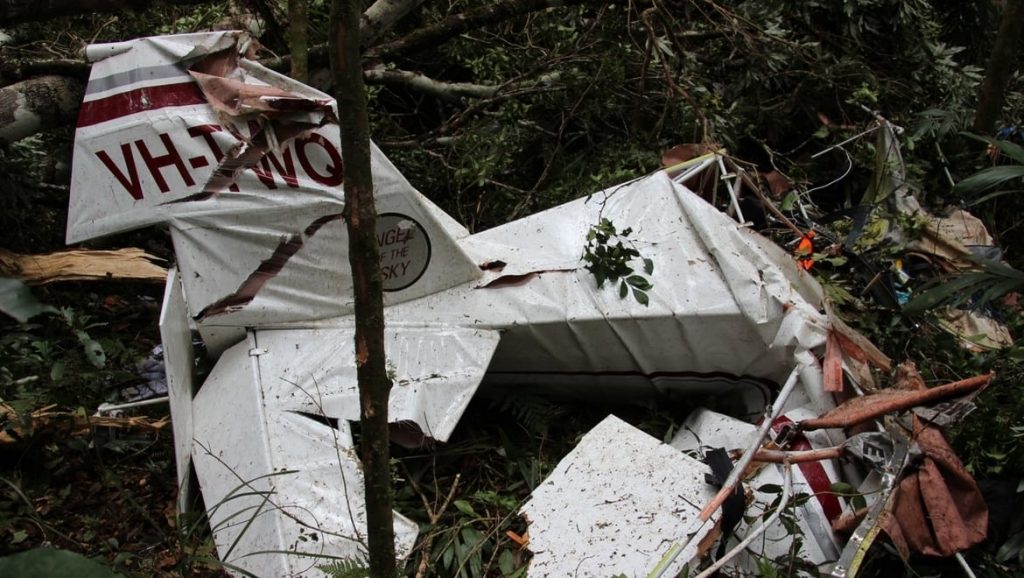
An ATSB investigation has concluded bad weather likely caused a home-built Wittman Tailwind W10 to crash on the NSW-Queensland border, killing two brothers onboard.
The final report found the pilot likely became spatially disorientated, causing the aircraft’s speed to vary between 109 and 175 knots before it hit a ridgeline in the Tooloom National Park on 12 January 2020.
The incident claimed the life Robert Dull, 68, who built the W10, and Owen Dull, 61.
VH-TWQ, with its owner-pilot and a passenger on-board, was returning from a fly-in at Evans Head in northern NSW that had been curtailed due to poor forecast weather conditions.
Their flight to Boonah in Queensland required a transit over the McPherson Range, which varies in altitude with several areas above 3,000 feet above sea level and some peaks above 4,000 feet.
The ATSB investigation into the accident established that the aircraft departed Evans Head shortly after 1:30pm and tracked north towards Boonah via the Richmond River valley.
About 17 minutes into the flight the pilot commenced a 180 degree turn overhead the township of Kyogle and diverted south back down the valley to Casino, landing there shortly after 2pm.
That initial flight from Evans Head indicated that the pilot was attempting to cross the ranges via a route known as the ‘border loop’, which is commonly used by VFR (visual flight rules) pilots to transit the range.
On the ground in Casino, the pilot left a voicemail message for a friend in which they stated they could not get past Kyogle due to the weather, so they had landed at Casino.
Shortly before 3pm, the aircraft took off from Casino and flew in a west-north-westerly direction, which indicated the pilot was attempting to cross the range via another common VFR route, which involved tracking via the Toonumbar Dam, then Killarney to Warwick.
At 3:10pm, recorded data showed that the aircraft commenced a series of rapid descents and climbs, between 3,100 and 4,000 feet, followed by a left descending turn, before shortly afterwards impacting terrain in dense rainforest. The pilot and passenger were fatally injured and the aircraft was destroyed.
“The ATSB found that the pilot, who was operating under visual flight rules, departed Casino with a high risk of encountering forecast cloud,” said ATSB director of transport safety Stuart Macleod.
Data from the last four minutes of the flight showed the aircraft’s groundspeed speed varied between 109 and 175 knots, while the aircraft’s rate of climb and descent varied between +2,400 feet/min and -2,400 feet/min.
“En route to Boonah, the aircraft encountered reduced visibility and the pilot likely became spatially disorientated, resulting in a loss of control,” said MacLeod.
The abrupt speed and altitude reversals and the operation of the aircraft over and near its speed limitations were indicative of a loss of control, the investigation notes.
A final data point showed the aircraft descending at 1,800 feet/min while travelling at a groundspeed of 172 knots and tracking towards high ground.
Macleod said spatial disorientation occurs when the brain receives conflicting or ambiguous information from the sensory systems. It is likely to happen in conditions in which visual cues are poor or absent, such as in adverse weather or at night.
“Once airborne, the pilot would have been in a position to assess the in-flight visibility and cloud and rain in the intended direction of travel,” he said.
“However, it is possible that continuing to fly towards an area of low cloud was influenced by the inherent challenges of assessing low visibility conditions. Weather-related decision making can be highly complex and therefore more prone to errors.
“Unfortunately, weather-related general aviation accidents remain one of the ATSB’s most significant causes for concern.”
The ATSB highlighted its recent safety education campaign titled ‘Don’t push it, DON’T GO – know your limits before flight’, which was developed to remind VFR pilots of the dangers of flying into IMC and to highlight the actions they can take to avoid a weather-related accident
That campaign highlights three key messages: the importance of thorough pre-flight planning and having alternate plans, that pressing on and entering instrument meteorological conditions (IMC) carries a significant risk of spatial disorientation, and the value of using a ‘personal minimums’ checklist to help manage flight risks.
“Pilots without a current instrument rating should always be prepared to amend and delay plans to fly due to poor or deteriorating weather conditions, and not to push on,” Macleod stressed.
“In this case the pilot initially did make a sound decision to divert to Casino and turn back from the first attempt to cross the ranges, demonstrating an awareness of the risk posed by the weather and the need to maintain visual reference.”
The ATSB said the pilot’s subsequent decision to depart Casino could be interpreted as likely taking advantage of acceptable conditions there with the notion that the weather further inland may have allowed for VFR flight over the ranges.
“The ATSB encourages VFR pilots to build a robust understanding of the risks of flying into IMC and just how rapidly spatial disorientation accidents can happen,” said Macleod.
Findings from other ATSB investigations into accidents where VFR pilots entered IMC were published in the ATSB’s recently updated Accidents involving Visual Flight Rules pilots in Instrument Meteorological Conditions publication.















